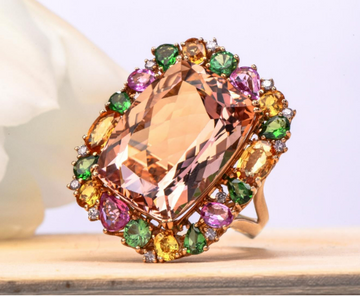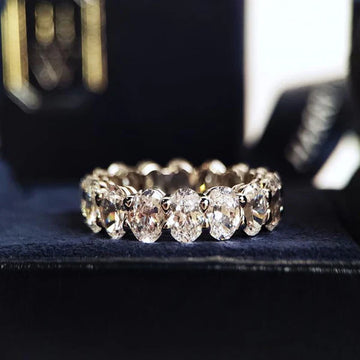Pink diamonds. Just the name conjures up images of romance, luxury, and unparalleled beauty. They sparkle with a delicate hue that is both captivating and enigmatic. But beyond their undeniable aesthetic appeal lies a truth that only amplifies their desirability: pink diamonds are incredibly rare. But how rare are they, exactly? Let’s delve into the fascinating world of these extraordinary gemstones and uncover the secrets behind their scarcity.
I. The Science Behind the Pink:
Before we can understand the rarity of pink diamonds, it’s important to understand where their color comes from. Unlike many colored diamonds, where trace elements like nitrogen (yellow diamonds) or boron (blue diamonds) are responsible for the hue, the origin of color in pink diamonds is different and still not fully understood.
The most widely accepted theory is that the color is due to a structural anomaly in the diamond’s crystal lattice. This is known as plastic deformation. During the diamond’s formation, intense pressure and heat cause the crystal structure to become distorted. These distortions cause the diamond to absorb light differently, resulting in the pink coloration.
This unique process, combined with the specific conditions required for its occurrence, is one of the primary reasons why pink diamonds are so rare.
II. The Argyle Mine: A Legacy of Pink
For decades, the Argyle mine in Western Australia was the world’s primary source of pink diamonds. This mine, operated by Rio Tinto, accounted for over 90% of the world’s pink diamond production. Its closure in November 2020 marked a significant turning point in the pink diamond market.
The Argyle mine produced a wide range of pink diamonds, from faint pinks to intense, vivid hues. Each year, Rio Tinto held a prestigious Argyle Pink Diamonds Tender, showcasing the most exceptional pink diamonds recovered from the mine. These tenders were highly anticipated events, attracting collectors, investors, and jewelry connoisseurs from around the globe.
With the closure of the Argyle mine, the supply of pink diamonds has been drastically reduced, further increasing their value and desirability.
III. Statistics Don’t Lie: Quantifying the Rarity
So, just how rare are pink diamonds in numerical terms?
- Overall Diamond Production: Pink diamonds make up a tiny fraction of the overall diamond production worldwide. It is estimated that only about 0.0001% of all diamonds mined are pink.
- Argyle Mine’s Contribution: Even within the Argyle mine’s production, pink diamonds were a small percentage. Only a tiny fraction of the diamonds recovered were deemed worthy of the annual Pink Diamond Tender.
- Color Grades and Intensity: The rarity increases exponentially with the intensity of the pink color. Faint pink diamonds are more common than Fancy Vivid Pink diamonds, which are the most sought-after and valuable.
- Size Matters: Larger pink diamonds are even rarer. Finding a pink diamond of significant carat weight with good clarity and intense color is an exceptionally rare event.
IV. What Factors Contribute to Their High Price?
The extreme rarity of pink diamonds directly translates into their high price.
- Scarcity: Limited supply and high demand drive up the price.
- Beauty and Desirability: Their unique color and captivating sparkle make them highly desirable among collectors and jewelry enthusiasts.
- Historical Significance: The Argyle mine’s legacy and the historical association of pink diamonds with royalty and prestige contribute to their perceived value.
- Investment Potential: Pink diamonds are considered a solid investment due to their increasing scarcity and consistent demand.
V. Beyond Argyle: Other Sources and Alternatives
While the Argyle mine was the primary source, pink diamonds have also been found in other locations, including:
- Brazil
- Russia
- South Africa
However, the pink diamonds from these sources are typically smaller and less intense in color compared to those from the Argyle mine.
For those seeking the beauty of pink without the high price tag, there are alternatives to consider:
- Lab-Grown Pink Diamonds: These diamonds offer the same chemical and physical properties as natural diamonds but are created in a controlled laboratory environment.
- Pink Topaz, Pink Sapphire, and other Gemstones: These gems offer a more affordable option, although they lack the brilliance and fire of a diamond.
Conclusion: An Enduring Symbol of Rarity and Beauty
Pink diamonds are more than just beautiful gemstones. They are a testament to the forces of nature and the extraordinary conditions required to create these rare treasures. Their scarcity, combined with their enchanting color and historical significance, ensures that they will remain highly sought-after and cherished for generations to come. They represent an enduring symbol of rarity, beauty, and the extraordinary.







